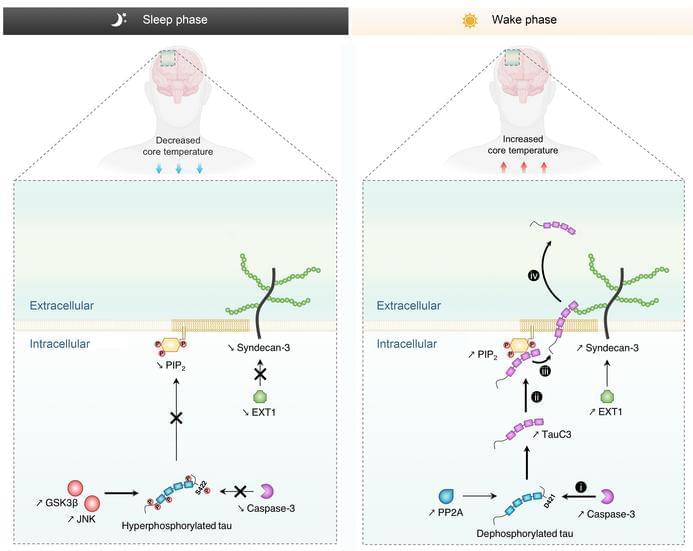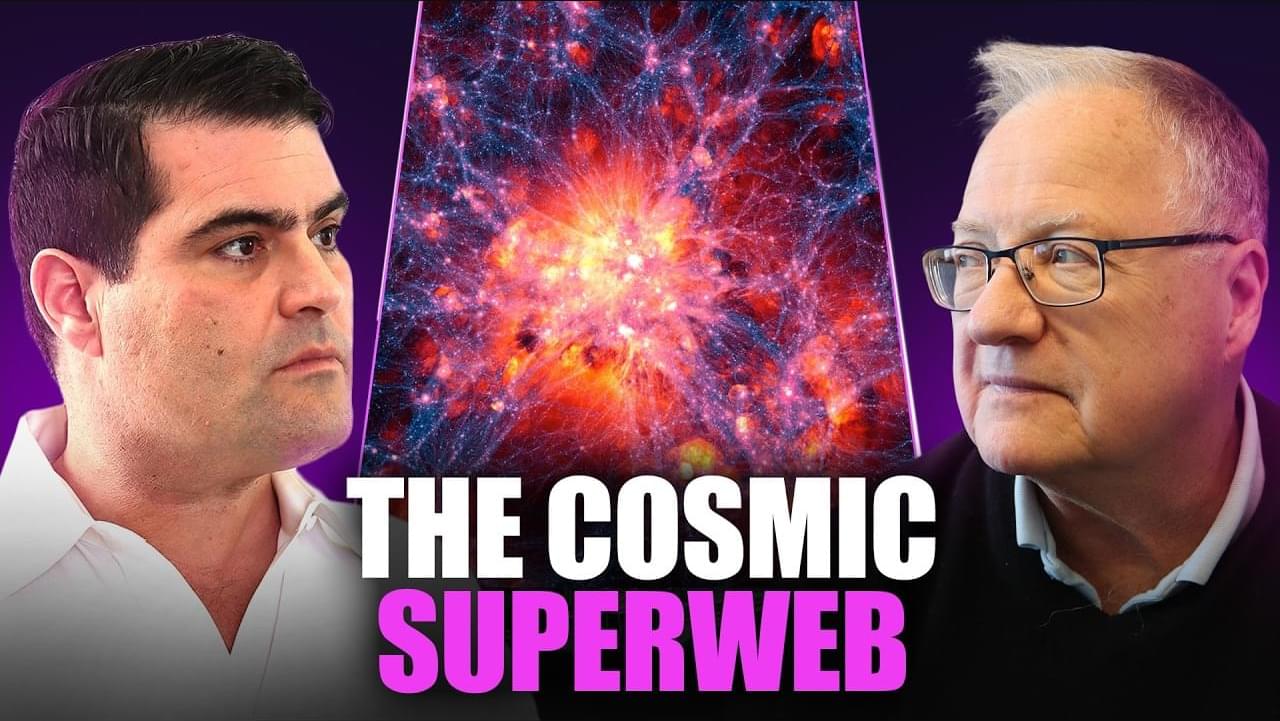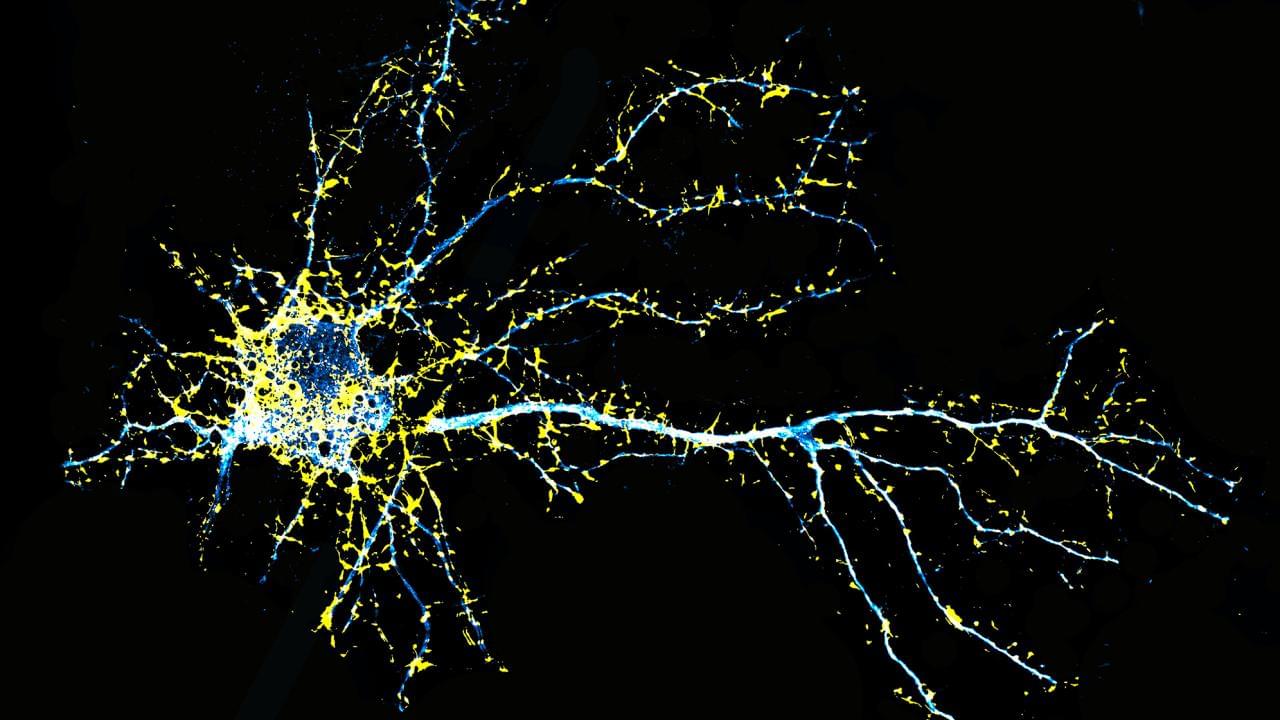Researchers unveil a groundbreaking hydrogel that mimics human skin’s ability to heal itself rapidly, revolutionising medicine and artificial skin applications.
Geoffrey Canet et al. discover wakefulness body temperature upregulates neuronal tau secretion and correlates with tau levels, highlighting the importance of sleep and thermoregulation in Alzheimer’s disease:
The figure shows temperature-dependent increase of colocalization between SDC3 (purple) and TauC3 (yellow) in primary mouse cortical neurons.
1Centre de Recherche du CHU de Québec – Université Laval, Axe Neurosciences, Québec, Québec City, Canada.
2Université Laval, Faculté de Médecine, Département de Psychiatrie et Neurosciences, Québec, Québec City, Canada.
3Université Laval, Faculté de Médecine, Département de Médecine Moléculaire, Québec, Québec City, Canada.
Win Extraterrestrial Metal: join my mailing list 💥 https://briankeating.com/yt 💥
Could entropy and coherence change everything we know about the universe? How does quantum information flow in the cosmic superweb? And will quantum mechanics reveal our universe’s deepest secrets?
Today, I’m joined by the one and only Dick Bond, a theorist who has helped reshape our understanding of dark matter, entropy, and quantum mechanics, to discuss how every aspect of the universe could be a result of quantum mechanics. Dick is a renowned astrophysicist known for his significant contributions to cosmology and the study of the universe’s large-scale structure. He has worked extensively on topics such as dark matter, dark energy, the cosmic microwave background (CMB), and quantum cosmology.
We also have a treat for you at the end of the episode, as Dick will grace us with a lecture titled Entropy in a Coherent Universe: Quantum Information Flows in the Cosmic SuperWeb. Don’t miss out!
Key Takeaways:
00:00 Intro.
Today’s super-resolution microscopes have made it possible to observe the nanoscale world with unprecedented detail. However, they require fluorescent tags, which reveal structural details but provide little chemical information about the samples being studied.
University of California, Davis, researchers have developed a new, neuroplasticity-promoting drug closely related to LSD that harnesses the psychedelic’s therapeutic power with reduced hallucinogenic potential.
Health News: Scientists achieved “a milestone” by charting the activity and structure of 200,000 cells in a mouse brain and their 523 million connections
Researchers discovered an entirely new human blood type after solving a 50-year mystery.
Back in 1972, doctors were stumped when a pregnant woman’s blood sample was missing a surface molecule that was present on everyone else’s red blood cells at the time. No one could explain it.
Fast forward fifty years, and scientists believe to have sussed it. The discovery led researchers from the UK and Israel to describe a new blood group system in humans, publishing their findings in 2024.
A team of engineers at Georgia Institute of Technology’s Wearable Intelligent Systems and Healthcare Center, working with colleagues affiliated with several institutions in South Korea, has developed a microscale brain–computer interface that is small enough to be placed between hair follicles on a user’s head.
In their paper published in the Proceedings of the National Academy of Sciences, the group describes how they made their interface, how it attaches to other hardware to allow readings to be captured and how well it worked during testing.
Over the past several decades, brain–computer interfaces have been developed that are capable of reading brain waves and responding to them in useful ways. These devices can be used to control a cursor on a computer screen, for example, or to choose buttons to press. Such devices are still in limited use, however, mainly due to their bulky nature. In this new effort, the researchers have developed a sensor so small it can be placed on the scalp between hair follicles.
Australia has a maths problem. A new Grattan report shows that one in three Australian school students fail to achieve proficiency in maths.
The report, The Maths Guarantee: How to boost students’ learning in primary schools, shows that students from disadvantaged backgrounds struggle the most with maths. But one in five students from well-off families struggle too.
In a 2023 international maths test, only 13 per cent of our Year 4 students excelled, compared to 22 per cent in England and 49 per cent in Singapore.
More Americans are receiving computed tomography (CT) scans than ever before, and while this technology can save lives, some scientists are concerned about the potential for low doses of ionizing radiation to increase cancer risks.









